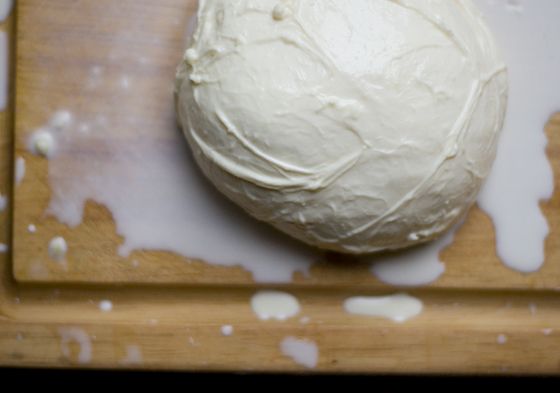30 Minute Mozzarella
Inroduction
About this Recipe
By: Sheridan Rogers
Mozzarella is a tricky cheese to make for most cheesemakers but this one is a stunner, according to Debra Allard of Cheeses Loves You. Debra is an Australian cheesemaker currently visiting Slow Food Cheese in Bra, Piedmont in north-west Italy. “Make sure you use fresh cows milk, fresh citric acid and rennet. If you don’t live close to a dairy, purchase unhomogenised milk from the supermarket,” she advises. This is a fast cheese and can be hit and miss. As with everything, practice makes perfect. The recipe is from Home Cheese Making by Ricki Carroll (page 134). Make sure all your equipment is spotlessly clean and that you have a thermometer to hand. Or watch Debra making it on YouTube: Part One Making Mozzarella Part 1 Part Two Making Mozzarella part 2

Ingredients
- good quality cows milk 2 litres
- fresh citric acid 3/4 teaspoon dissolved in 1/4 cup cooled boiled water
- rennet 1/8th teaspoon in 1/4 cup unchlorinated cooled boiled water
Heat the milk to to 13˚C. Add the dissolved citric acid. Stir for one minute with a long stainless steel slotted spoon. Keep stirring and bring the temperature up to 32˚C. Add the rennet and stir for two minutes. Cover milk with a lid and leave for five minutes. Check the curd, it should look like custard with a clear separation between the curd and the whey. If the curd is too soft then leave a few more minutes. Cut curds into 2 cm cubes using a long slotted stainless steel spoon and, gently stirring, move the curds around with the spoon until the temp reaches 40˚C. Remove from the heat and continue to stir slowly for two minutes. Scoop out the curds with the slotted spoon and spoon into a microwavable bowl. Press the curds gently with your hand and pour off as much whey as possible. Microwave the curd on HIGH for 1 minute. Drain off whey and gently fold the cheese over and over with your hand or spoon. This distributes the heat throughout the cheese, which will not stretch until it is too hot to touch. (63˚C inside the curd). Microwave two more times for 35 seconds each, add salt to taste and knead to distribute the heat after each heating. Using rubber gloves stretch the curd until it is smooth and elastic. When the curd stretches like toffee it is ready. If the curd snaps and breaks it needs to be heated again. Form a neat ball and drop into ice cold water or eat while warm. After an hour take ball out of water and place in a zip-top top bag. Consume within a week. Note: If not using a microwave: heat the whey to 80˚C, add a sprinkle of salt and then add the curd, using thick rubber gloves. When the curd starts to knit stretch in the curd and form into balls as above.
